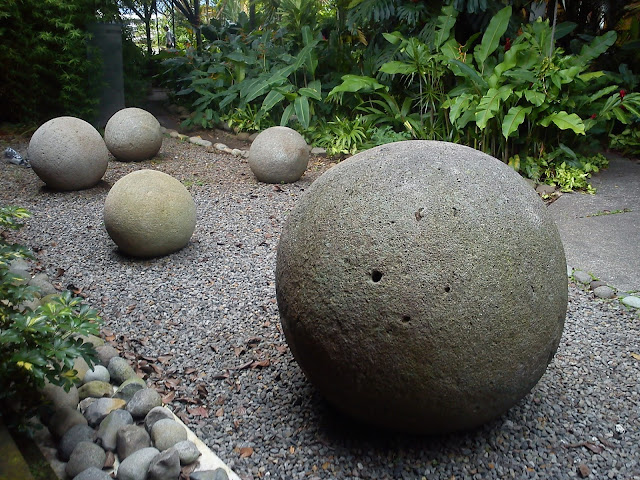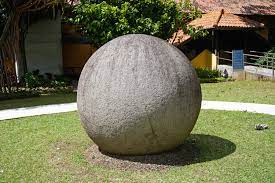PRECOLOMBIAN SPHERES OF COSTA RICA
In the parks of San José, of government institutions there are some carved stone spheres and even of the gardens of some houses in the Central Valley. They were beautifying objects that came from the south of the country. But their origin and function were and still are a head-scratcher.
Costa Rica Stone Spheres refer to a collection of over 300 Costa Rica petrospheres, located on Cano Island. The stone spheres are called Las Bolas in their locality and well known stone carvings from the Isthmo-Colombia era. They are believed to have been built in lines leading up to the Chiefs House, but their precise purpose remains unclear. The spherical stones are part of the pre-Columbian chieftainship of the Diquis which have been added to the UNESCO World Heritage List.
THE DIQUIS SPHERES
We do not know precisely who built them or why, but they are an example of the craftsmanship of the Indian peoples that existed before Europeans arrived in America and who populated the territories between what is now Costa Rica and Panama.
The history of the stone spheres begins in the 1940s. At the time, part of the history of Costa Rica was written in close connection with the development of banana farming by the American company “United Fruit Compagnie.".
The “YUNAI”, as the Costa Ricans nicknamed the company, was preparing the land in the south of the country for planting bananas when by accident two workers discovered the first spheres.
From this event, the spheres have been the subject of discussions and theories of all kinds: whether they were built by extraterrestrials, or whether they are the symbols of the social and political order of the Indian peoples from the Diquis region (South South of the country). On the other hand, the peoples of the North of the continent (Mayas and Azteques) or those of the South (Incas among others) had chosen the verticality of the Pyramid to symbolize their social and political organization.
The places where the spheres were found have unfortunately not been respected and many spheres have been removed from their original locations. So unfortunately we lost the basic information.
Today, thanks to the efforts of specialized researchers from the National Museum and the community of Palmar Nord and Palmar Sud, the park of spheres “Finca 6” has been created: it is an archaeological site located in “Palmar Sur de Osa” where the largest concentration of stone spheres in our country is found. This site was declared a Historical Heritage of Humanity by UNESCO in 2014.
WHAT WE KNOW ABOUT THE SPHERES TODAY
The spheres are sculptures that were present in public places frequented by Indian communities in the area. They were built continuously for at least 1,000 years (between AD 400 and AD 1500) until the arrival of the Spaniards in the New World.
From the year 500 AD, excavations show that there was a complex social organization, a tribal organization with chiefs ("cacicasgos"), a redistribution of land, as well as a specialization of agricultural and artisanal productions.
The construction of the spheres implied a decision and a collective organization of work, but also an important effort in order to achieve these perfectly round works. Approximately 200 various sizes stone spheres have been found to date, most of their girth is between 2.5cm to 30cm and the standard size is almost 150 cm.
MYTHS RELATED TO THE STONE SPHERES OF COSTA RICA
Many wonder about the purpose of the existence of the stone spheres. Although no one is sure, a few myths have been put forward as to how the stones appeared. Some people believe that the tombstones were used as compasses or are associated with astronomical things. Some legends claim that the stones came from the lost continent of Atlantis, while others claim that the local inhabitants had a part capable of softening the rocks. Other people believe the stones were used as grave markers or used to mark the property of former rulers.
The continued manufacture of the spheres and their locations, located exclusively in the south of the country, show the importance of these sculptures to our culture.







0 Comments